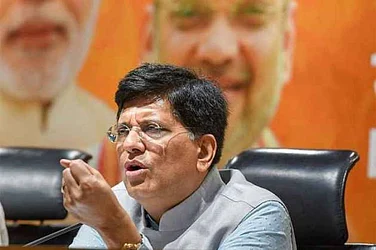The ease with which the trade of precious metals and stones can be used to move "large amounts" of funds without leaving an ownership trail shows this sector in India is vulnerable to be used as a tool for money laundering and terrorist financing, the Financial Action Task Force (FATF) has said.
The Paris-headquartered global body said in its mutual evaluation report for India released on Thursday that the money laundering (ML) risks associated with the "smuggling and dealing" in precious metals and stones should be "further developed" given the size of this sector in the country.
The report said there were approximately 1,75,000 DPMS (dealers of precious metals and stones) in the country but its apex body-- Gems and Jewellery Export Promotion Council (GJEPC) only had 9,500 members.
Advertisement
Certificate of being a GJEPC member along with tax registration is mandatory for undertaking import or export of gems trade in India.
Currently, there are "shortcomings" in risk understanding, particularly relating to money laundering threats arising from smuggling and dealing in precious metals and stones and also human trafficking, it said in its 368-page report.
"The ease with which PMS (precious metals and stones) can be used to move large amounts of funds without leaving an ownership trail combined with the size of the market in India means there are vulnerabilities associated with their use as a tool for ML/TF (terrorist financing)," the report said.
Advertisement
It recommended that India should include "deeper" qualitative and quantitative data and typologies from domestic and international sources on the money laundering risks associated with precious metals and stones smuggled into and circulating in India, when undertaking future risk assessments on DPMS and gold and diamond smuggling and the associated money laundering risks.
The FATF said similar action was required to deal with human trafficking cases.
"Understanding of money laundering threats arising from trafficking in human beings and migrant smuggling and ML/CFT risks from smuggling and dealing in precious metals and stones can be further developed.
"Effective domestic coordination and cooperation on AML/CFT issues occurs at both the policy and operational levels," as per the report.
A more detailed action plan that provides more "granular" mitigation measures, which lays out clear priorities and benchmarks for implementation, would strengthen responses, it said.
It added that there could be a possibility that this sector (PMS) may have "higher risks" with criminal networks operating cross-border not being investigated and captured by law enforcement reporting.
"Given India's position as a leading consumer of gold and gems and producer of refined diamonds, India's authorities should continue to monitor fraud and smuggling evasion techniques and associated ML as well as consider collecting further data and typologies so that investigating authorities can continue to dedicate resources to address ML threats in a targeted manner," the FATF recommended.
Advertisement
The report said it found that precious metals and stones play an important role in Indian tradition and culture and continue to be used as a store of value for large proportion of the population.
India is currently the world's second largest consumer of gold, the largest importer, and the largest exporter of gold jewellery.
It also has one of the largest industries for polishing of diamonds and gems, and jewellery manufacture with the sector constituting about 7 per cent of the GDP.















 Just one email a week
Just one email a week